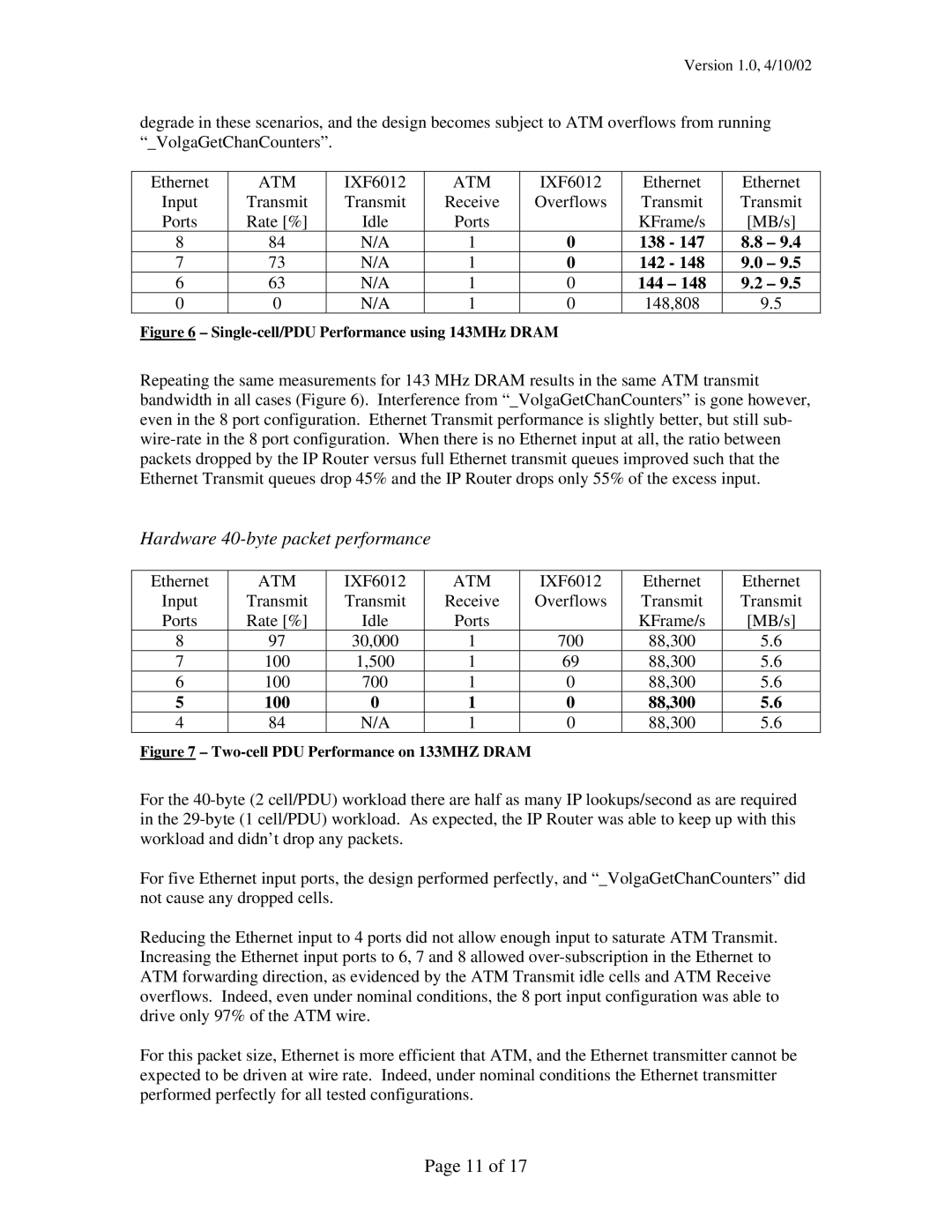
Version 1.0, 4/10/02
degrade in these scenarios, and the design becomes subject to ATM overflows from running “_VolgaGetChanCounters”.
Ethernet | ATM | IXF6012 | ATM | IXF6012 |
Input | Transmit | Transmit | Receive | Overflows |
Ports | Rate [%] | Idle | Ports |
|
8 | 84 | N/A | 1 | 0 |
7 | 73 | N/A | 1 | 0 |
6 | 63 | N/A | 1 | 0 |
0 | 0 | N/A | 1 | 0 |
Figure 6 – Single-cell/PDU Performance using 143MHz DRAM
Ethernet
Transmit
KFrame/s
138 - 147
142 - 148
144 – 148
148,808
Ethernet
Transmit
[MB/s]
8.8– 9.4
9.0– 9.5
9.2– 9.5 9.5
Repeating the same measurements for 143 MHz DRAM results in the same ATM transmit bandwidth in all cases (Figure 6). Interference from “_VolgaGetChanCounters” is gone however, even in the 8 port configuration. Ethernet Transmit performance is slightly better, but still sub-
Hardware 40-byte packet performance
Ethernet | ATM | IXF6012 | ATM | IXF6012 |
Input | Transmit | Transmit | Receive | Overflows |
Ports | Rate [%] | Idle | Ports |
|
8 | 97 | 30,000 | 1 | 700 |
7 | 100 | 1,500 | 1 | 69 |
6 | 100 | 700 | 1 | 0 |
5 | 100 | 0 | 1 | 0 |
4 | 84 | N/A | 1 | 0 |
Figure 7 – Two-cell PDU Performance on 133MHZ DRAM
Ethernet
Transmit
KFrame/s
88,300
88,300
88,300
88,300
88,300
Ethernet
Transmit
[MB/s]
5.6
5.6
5.6
5.6
5.6
For the
For five Ethernet input ports, the design performed perfectly, and “_VolgaGetChanCounters” did not cause any dropped cells.
Reducing the Ethernet input to 4 ports did not allow enough input to saturate ATM Transmit. Increasing the Ethernet input ports to 6, 7 and 8 allowed
For this packet size, Ethernet is more efficient that ATM, and the Ethernet transmitter cannot be expected to be driven at wire rate. Indeed, under nominal conditions the Ethernet transmitter performed perfectly for all tested configurations.
Page 11 of 17
